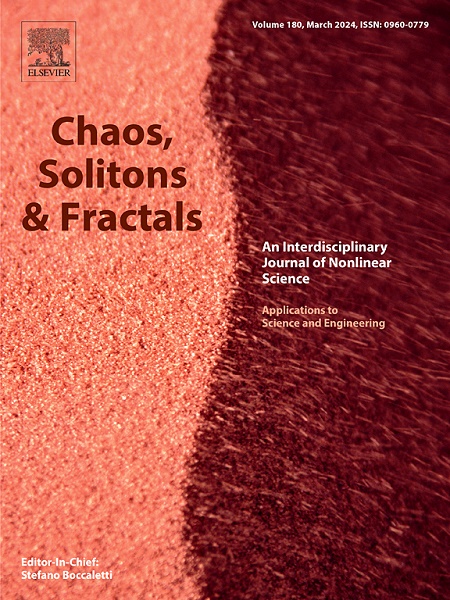Effect of complex vortices generated by asymmetrically distributed induced charges on fluid flow and mass transfer in pressure driven micromixers
IF 5.3
1区 数学
Q1 MATHEMATICS, INTERDISCIPLINARY APPLICATIONS
引用次数: 0
Abstract
Microscale electric field-induced vortical structures, arising from spatial accumulation of induced charges, demonstrate significant potential for augmenting mixing performance in low Reynolds number (Re) laminar flows. This investigation establishes a computational framework incorporating an asymmetric conductive plate with hybrid linear-curvilinear edges to systematically elucidate the coupling mechanisms between inhomogeneous charge distributions, complex vortex generation, and pressure-driven molecular transport. Our findings reveal that under balanced pressure-driven flow (PDF) and induced-charge electroosmotic flow (EOF), expanding the polarization area promotes bilateral charge accumulation along curvilinear boundaries, creating localized electric field minima that suppress interfacial slip velocity and mixing efficiency. In contrast, linear edges exhibit maximum slip velocities, generating vortex pairs with enhanced convection capacity. Notably, plate reorientation and increased curvature radius amplify surface electric field asymmetry, achieving superior mass transfer through either expanded vortex perturbation domains or intensified rotational intensity. When PDF dominates EOF by 25-fold, the weakened charge heterogeneity minimally stimulates vortex development, rendering interfacial perturbation the primary mixing driver. This work advances fundamental understanding of asymmetric charge-polarization dynamics in microscale flow manipulation, offering critical insights for designing active micromixers.
非对称诱导电荷产生的复杂涡对压力驱动微混合器内流体流动和传质的影响
微尺度电场诱导的涡旋结构是由感生电荷的空间积聚引起的,在低雷诺数(Re)层流中具有显著的增强混合性能的潜力。本研究建立了一个包含线性-曲线混合边缘的非对称导电板的计算框架,以系统地阐明非均匀电荷分布、复杂涡产生和压力驱动的分子传输之间的耦合机制。研究结果表明,在平衡压力驱动流动(PDF)和诱导电荷电渗透流动(EOF)下,极化面积的扩大促进了沿曲线边界的双边电荷积累,产生局域电场极小值,抑制了界面滑移速度和混合效率。相反,线性边缘表现出最大的滑移速度,产生对流能力增强的涡对。值得注意的是,板的重新定向和曲率半径的增加放大了表面电场的不对称性,通过扩大涡旋摄动域或增强旋转强度实现了更好的传质。当PDF占EOF的25倍时,电荷非均质性减弱对涡旋发展的刺激最小,使得界面扰动成为主要的混合驱动因素。这项工作推进了对微尺度流动操纵中不对称电荷极化动力学的基本理解,为设计有源微混合器提供了关键的见解。
本文章由计算机程序翻译,如有差异,请以英文原文为准。
求助全文
约1分钟内获得全文
求助全文
来源期刊

Chaos Solitons & Fractals
物理-数学跨学科应用
CiteScore
13.20
自引率
10.30%
发文量
1087
审稿时长
9 months
期刊介绍:
Chaos, Solitons & Fractals strives to establish itself as a premier journal in the interdisciplinary realm of Nonlinear Science, Non-equilibrium, and Complex Phenomena. It welcomes submissions covering a broad spectrum of topics within this field, including dynamics, non-equilibrium processes in physics, chemistry, and geophysics, complex matter and networks, mathematical models, computational biology, applications to quantum and mesoscopic phenomena, fluctuations and random processes, self-organization, and social phenomena.
 求助内容:
求助内容: 应助结果提醒方式:
应助结果提醒方式:


